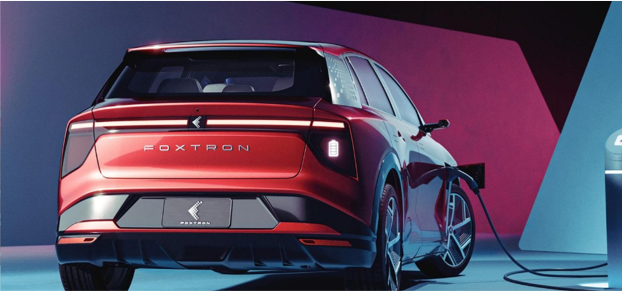
Introduction
This BLOG discusses whether I am better to buy a house battery or EV with Vehicle to Home (V2H) charging capability.
If I opt for an EV instead of a house battery, it will need to be equipped with V2H plus AC and DC fast charging (CCS2).
My situation
- I live and work in Melbourne with my own business, home office and car garage.
- I have an all-electric home: what’s involved
- I have an older 3.8 kW solar system with 15 solar panels and a 3-phase Fronius Symo 3.7-3-M. inverter. I plan a future upgrade.
- I want a battery to shift some of my daytime solar power to the evening.
- I am considering a house battery with new government incentives, or an EV in June 2026 when technologies and government policy become better aligned.


New Charging Standards
If I opt for an EV instead of a house battery, I will make sure it is equipped with CCS2 and V2H:
- The European CCS2 standard charging allows 1-phase and 3-phase AC, plus DC for fast charging up to 43 kW and is becoming the industry standard in Australia.
- The new V2H standard enables power to be supplied from my EV to my home, making it a home battery on 4 wheels.
- The CHAdeMO is a charging standard with vehicle to grid (V2G) functionality added. This would allow me to sell my power for high power prices during the evening peak.
- However, until I upgrade my solar system, I won’t have sufficient power to exploit this. I know that 15 new solar panels could give me at least 6.5kW peak power in future.
Accessories Required
For now, if I stay with my 3.8 kW 3-phase Fronius inverter, I will need the following accessories:
- The Fronius Wattpilot 22 kW EV charger with CCS2 and V2H capability, compatible with my solar inverter. It allows dynamic load balancing to ensure my power demand is used optimally to avoid load peaks. Price supplied and installed is around $2,300.
- The Fronius home energy management app ‘Fronius Solar.web’ to control or adjust settings of the Wattpilot from my phone.
- A smart meter, which is already installed.
This new system will allow me to supply power to my different appliances with priority and store surplus power in an EV.


My Annual Power Demand
According to my annual power bill, my annual power demand from the grid is 1,900 kWh after my 3.8 kW solar system has done its job offsetting most of my power demand. In total, it is around 6,400 kWh pa.
However, I still feed power into the grid for a minimal price, so I would prefer to feed it into a battery instead.
New Government Policy
The Australian Government’s ‘Cheaper Home Batteries’ program offers an upfront rebate of around 30% off the cost of installing a home battery system. Here’s a summary of the scheme:
- The rebate is calculated at approximately $330–$335 per usable kilowatt-hour (kWh) of battery capacity.
- For a 10 kWh battery, that’s a discount of about $3,300–$3,350. Therefore, a house battery would cost me around $8,500 net, supplied and installed.
- The rebate applies to batteries with capacity of between 5 and 100 kWh, but only the first 50 kWh is eligible.
- It’s delivered through the Small-scale Renewable Energy Scheme (SRES), using small-scale technology certificates (STCs).
Batteries that Qualify
I found the following batteries qualify for the Cheaper Home Batteries rebate currently:
- Sigenergy SigenStor 5-in-1 integrated system, with 8–48 kWh modular battery, bi-directional PCS, inverter, EV charger, and energy management system (EMS)
- BYD Premium HVS / HVM 5–22 kWh cobalt-free lithium battery pack, scalable, capable of off-grid and emergency functionality
- Tesla Powerwall 2 & 3 13.5 kWh, all-in-one system with high discharge rate
- Sungrow SBR/SBH Series 9.6–25.6 kWh High-voltage LFP, modular, compatible with SH hybrid inverters
- GoodWe Lynx F G2 Series 6.4–28.8 kWh, stackable modular design with remote monitoring, compatible with GoodWe inverters
- Installers need to be registered for the Cheaper Home Batteries Program
Electric Vehicle Rebates
The New Vehicle Efficiency Standard (NVES) is now operating to encourage the take up of EVs.
Many of these EVs now have or will have V2H and CCS2 capability.
Also, there are significant tax advantages for buying an EV through my business, particularly those under the Australian luxury car threshold. This is $91,387 in 2025-26 for EVs.
Vehicles with V2H
These vehicles already have V2H as at July 2025:
- EVs: Nissan Leaf, Hyundai Ioniq 5, Kia EV6
- PHEV: Mitsubishi Outlander
- Most are planning to add V2H capability

Summary
EV V2H Chargers
Consider this list of V2H fast chargers available now in Australia:
- Fronius Wattpilot Flex 11–22 kW Type 2
- MyEnergi Zappi V2H 7–22 kW-2H22UB-G Multiphase Bidirectional Charger 11–22 kW
- Sigenergy Sigen EV DC Module 12.5–25 kW
- V2Grid home and commercial chargers 7–132 kW with CHAdeMO
Battery Payback
My payback estimate for a house battery is as follows, using it for my evening power demand:
- Estimated total usage: 6,400 kWh pa
- Estimated evening usage 6 to 8 kWh/day, or 2,190 to 2,920 kWh pa
- Battery size: 10 kWh
- Installed cost estimate after federal battery rebate $8,500
- Annual savings estimate: $700 to $1,020, by avoiding buying power in the evening when rates are highest 30–35c/kWh
- Simple payback period: 8.3 to 11.6 years
An EV Makes More Sense
Whilst I need a new car, an EV will cost more.
If I allocate the house battery cost of $8,500 to the Fronius Wattpilot EV charger and the price premium of an EV over a petrol equivalent, I will achieve similar savings as a basis.
In addition, an EV will give me:
- Business tax advantages
- Lower running and maintenance costs
- A nicer and quieter car to drive
Either way, I will make a contribution to reducing global warming and soaking up excess power during the day to help stabilise the power grid.
In future, when I upgrade my solar panels, I will use my home energy management system to supply surplus power to the grid (V2G) for high electricity spot prices.
For me, an EV makes more sense than a house battery. In 2026, I will consider EVs that:
- Are priced under the luxury tax threshold
- Have both V2H and V2G capability
- Have a CCS2 standard fast charging port
